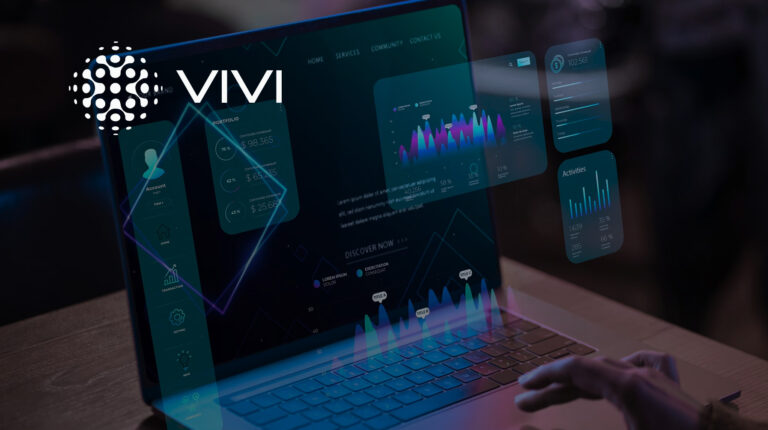Major insurance companies like Lemonade, Geico, Allstate, and Lincoln Financial are already leveraging conversational AI solutions to transform their customer interactions and streamline operations. These AI agents provide real time assistance across voice and text channels in over 100 languages, enabling human insurance agents to focus on more complex tasks while ensuring customers receive immediate, personalized support.
The technology combines natural language processing, machine learning, and large language models to create virtual assistants that can handle everything from claims processing to policy renewals. Unlike traditional rule-based systems, these AI solutions understand context, learn from customer interactions, and deliver human like responses that enhance customer satisfaction across all digital channels.
Key Takeaways
- Conversational AI reduces response times by up to 15% and increases underwriting accuracy rates to over 95%
- Major insurers like Lemonade, Geico, and Allstate are successfully using AI chatbots for claims processing and customer service
- AI agents provide 24/7 support across voice and text channels in 100+ languages
- Conversational AI automates routine tasks, enabling human agents to focus on complex customer issues
- Implementation challenges include data privacy compliance, legacy systems integration, and proper agent training
- AI-powered fraud detection and personalized product recommendations are driving innovation in insurance
What is Conversational AI in Insurance?
Conversational AI represents a fundamental shift from traditional chatbots to sophisticated AI agents that can engage in nuanced, context-aware exchanges with customers. This technology leverages natural language processing, machine learning algorithms, and large language models to understand customer inquiries, interpret intent, and provide accurate responses in real-time.
The insurance industry has moved beyond basic FAQ bots to deploy comprehensive conversational AI solutions that integrate with existing systems including CRM platforms, policy management databases, and claims processing workflows. These virtual assistants can access customer data instantly, pull policy information, and guide customers through complex insurance processes without human intervention.
Core Technologies Powering Insurance AI
Modern conversational AI platforms utilize several key technologies that distinguish them from legacy chatbots:
Natural Language Understanding (NLU) interprets customer inputs to extract intent and context, allowing the AI to understand policy terms, claims details, and coverage questions with remarkable accuracy.
Machine learning algorithms continuously improve performance by analyzing customer feedback and conversation outcomes, ensuring the AI becomes more effective over time.
Large language models like GPT-4 enable context-tailored responses to complex queries that are often indistinguishable from human agents, providing personalized support that enhances customer experience.
Speech recognition and text-to-speech capabilities enable AI powered chatbots to process and respond to spoken queries, facilitating seamless voice interactions through contact centers and mobile applications.
Integration with Enterprise Systems
A crucial differentiator of modern conversational AI technology is its ability to ensure seamless integration with existing insurance infrastructure. These systems connect with policy management platforms, CRM databases, and claims processing systems to retrieve and update customer information in real-time.
The AI platform serves as an intelligent layer that can fetch policy details, process coverage changes, initiate claims workflows, and even trigger automated underwriting processes. This integration capability transforms the AI agent from a simple information provider into a fully functional insurance assistant capable of executing transactions and resolving customer needs end-to-end.
Real-World Applications and Use Cases
Insurance providers are implementing conversational AI across multiple touchpoints to automate routine queries, streamline operations, and enhance customer engagement. The most impactful applications focus on high-volume, standardized processes where AI can deliver immediate value while freeing human agents for complex issues.
Claims Processing Automation
The claims process represents one of the most successful applications of conversational AI in the insurance sector. AI agents guide customers through First Notice of Loss (FNOL) procedures, collect necessary documentation, and can even provide instant claim approvals for straightforward cases.
These systems can analyze submitted photos, verify policy coverage, assess damage estimates, and determine settlement amounts automatically. For simple claims like minor auto incidents or standard property damage, conversational AI can complete the entire process from initial report to payment authorization without human intervention.
24/7 Customer Support Operations
Insurance chatbots handle millions of customer interactions annually, providing instant responses to policy inquiries, billing questions, and coverage explanations. These virtual agents excel at routine tasks such as policy renewals, payment processing, and basic underwriting questions that traditionally required phone calls to human representatives.
The AI continuously learns from customer interactions to improve response accuracy and can escalate complex issues to human agents with full conversation context, ensuring smooth handoffs when specialized expertise is required.
Lead Qualification and Sales Support
Conversational AI assists agents by qualifying prospects through intelligent questioning sequences, collecting customer needs assessments, and recommending appropriate insurance products based on individual circumstances. This automation allows sales teams to focus their efforts on qualified leads while ensuring all prospects receive immediate attention.
The technology can also provide real-time quotes for standard products, schedule agent consultations, and nurture leads through personalized follow-up sequences, significantly improving conversion rates and customer engagement.
Fraud Detection and Risk Assessment
Advanced AI models monitor conversations for suspicious patterns, verify customer identities through multi-factor authentication, and flag potentially fraudulent claims for human review. The system analyzes speech patterns, response timing, and claim details against historical data to identify anomalies that warrant investigation.
This proactive approach to fraud prevention helps insurance firms reduce losses while ensuring legitimate claims receive rapid processing, improving both operational efficiency and customer satisfaction.
Success Stories from Leading Insurance Companies
Lemonade’s Revolutionary AI Implementation
Lemonade’s Maya virtual assistant processes over one-third of claims instantly, with some approvals delivered within minutes of submission. The company credits this AI-driven approach for achieving industry-leading customer satisfaction scores and dramatically reducing operational costs.
Maya handles everything from policy purchases to claims settlements, utilizing computer vision to assess damage photos and machine learning to detect fraud patterns. This comprehensive automation enables Lemonade to offer competitive pricing while maintaining high service standards.
Geico’s Kate Chatbot Success
Geico’s Kate chatbot fields millions of customer queries annually, providing instant quotes, policy information, and account services through both mobile apps and web platforms. The implementation has significantly reduced call center volume while improving customer access to services outside traditional business hours.
Kate’s integration with Geico’s core systems allows customers to make policy changes, process payments, and access coverage details without speaking to human agents, resulting in faster service delivery and improved customer relationships.
Allstate’s Customer Engagement Platform
Allstate has deployed conversational AI across multiple customer touchpoints, reporting substantial improvements in customer satisfaction and measurable reductions in average call handling times. Their AI assists agents during live interactions, suggesting next actions and providing real-time access to relevant policy information.
The platform also enables proactive customer outreach during crisis events, automatically contacting affected policyholders to offer assistance and streamline claims reporting processes during natural disasters.
Enterprise-Scale Implementation Results
A Fortune 500 insurer implementing conversational AI achieved a 15% reduction in average handling time while maintaining service quality standards. The deployment automated 60% of routine customer inquiries, allowing human agents to focus on complex cases requiring specialized knowledge or emotional support.
Benefits of Conversational AI for Insurance Companies
The implementation of conversational AI delivers measurable improvements across multiple business metrics, from customer satisfaction scores to operational cost reductions. Insurance companies report significant returns on investment within months of deployment, driven by automation of mundane and repetitive tasks and enhanced customer experience delivery.
Enhanced Customer Experience and Satisfaction
Conversational AI provides instant, personalized responses that exceed customer expectations for speed and relevance. The technology enables insurance companies to offer 24/7 support across all digital channels, ensuring customers receive immediate assistance regardless of time zones or business hours.
AI agents can access complete customer histories, policy details, and interaction records to provide contextual responses that demonstrate understanding of individual circumstances. This personalized approach significantly improves customer satisfaction scores and strengthens customer relationships over time.
The technology also eliminates common frustrations like long hold times, transfers between departments, and repetitive information requests that plague traditional contact center operations.
Significant Cost Reduction and Scalability
Conversational AI platforms handle thousands of simultaneous customer interactions without additional staffing costs, providing unlimited scalability during peak demand periods such as natural disasters or policy renewal seasons. This capability delivers substantial cost savings compared to traditional human-staffed operations.
Insurance firms typically see 30-50% reductions in manual workload for front-line customer service representatives, allowing these human resources to be redirected toward higher-value activities that require emotional intelligence or complex problem-solving skills.
The technology also reduces training costs and turnover-related expenses by handling routine queries that often contribute to agent burnout and job dissatisfaction.
Improved Operational Efficiency
AI automation streamlines insurance operations by eliminating data entry errors, reducing processing times, and ensuring consistent service delivery across all customer touchpoints. The technology maintains detailed interaction logs that support compliance requirements and enable continuous process improvement.
Response times often drop below five minutes for standard inquiries, compared to traditional phone-based systems that may require customers to wait 15-30 minutes for agent availability. This dramatic improvement in efficiency translates directly to enhanced customer satisfaction and reduced operational costs.
Increased Accuracy and Risk Management
Conversational AI systems achieve underwriting accuracy rates exceeding 95% in many deployments, surpassing human performance for standardized risk assessment tasks. The technology eliminates subjective interpretation errors and ensures consistent application of underwriting guidelines across all customer interactions.
AI models can process vast amounts of customer data simultaneously, identifying risk factors and pricing adjustments that human underwriters might miss. This comprehensive analysis capability improves portfolio performance while reducing exposure to adverse selection.
Better Customer Engagement and Retention
Proactive AI engagement helps insurance providers identify cross-selling opportunities, renewal risks, and customer satisfaction issues before they impact retention rates. The technology can analyze customer behavior patterns to trigger personalized outreach campaigns and product recommendations.
AI agents also provide consistent service quality regardless of individual agent experience levels or training variations, ensuring all customers receive the same high standard of support that strengthens long-term relationships.
Implementation Challenges and Solutions
While conversational AI offers substantial benefits, successful deployment requires careful attention to data privacy compliance, systems integration complexity, and organizational change management. Insurance companies must address these challenges proactively to realize the full potential of AI technology.
Data Privacy and Security Compliance
Insurance organizations handle sensitive personal and financial information that must be protected according to strict regulatory requirements including GDPR, CCPA, and industry-specific standards. Conversational AI platforms must incorporate robust encryption, audit logging, and consent management capabilities to maintain compliance.
Solutions include implementing data masking protocols that limit AI access to sensitive information, establishing clear data retention policies, and ensuring all customer interactions are logged for regulatory audit purposes. Leading conversational AI platforms provide built-in compliance features and maintain certifications like ISO 27001 to support enterprise security requirements.
Legacy Systems Integration
Many insurance companies operate core systems that were built decades ago on mainframe technologies that complicate seamless AI integration. These legacy systems often lack modern APIs and require custom middleware development to enable real-time data exchange with AI platforms.
Successful implementations typically adopt phased integration approaches, starting with less complex use cases like policy inquiries before expanding to claims processing and underwriting workflows. This strategy allows IT teams to develop integration expertise while demonstrating AI value to stakeholders.
Training and Change Management
Human agents require comprehensive training to work effectively alongside AI systems, learning when to escalate conversations and how to leverage AI-generated insights during customer interactions. Resistance to change is common, particularly among experienced agents who may view AI as a threat to job security.
Effective change management emphasizes how AI technology assists agents rather than replacing them, highlighting opportunities to focus on complex, high-value interactions that require human expertise. Training programs should include hands-on experience with AI tools and clear guidelines for AI-human collaboration.
Platform Selection and Vendor Management
Choosing the right conversational AI platform requires careful evaluation of industry-specific experience, integration capabilities, and scalability features. Insurance companies should prioritize vendors with proven track records in financial services and comprehensive compliance certifications.
Key evaluation criteria include customization flexibility, multilingual support, voice interaction capabilities, and analytics features that enable performance monitoring and continuous improvement.
Advanced AI Technologies Transforming Insurance
The insurance industry is rapidly adopting cutting-edge AI technologies that extend far beyond basic chatbots to create sophisticated virtual assistants capable of handling complex workflows and decision-making processes.
Large Language Models and Generative AI
Large language models like GPT-4 enable insurance AI agents to engage in natural, contextual conversations that closely mimic human interactions. These systems can understand nuanced customer questions, interpret policy language, and generate personalized explanations of coverage terms and conditions.
Generative AI capabilities allow insurance chatbots to create customized communications, draft policy documents, and develop personalized risk management recommendations based on individual customer profiles and claim histories.
Voice-Enabled AI and Speech Recognition
Advanced speech recognition technology enables customers to interact with AI agents through natural voice conversations, eliminating the need for typing or menu navigation. These systems can process regional accents, industry terminology, and emotional context to provide appropriate responses.
Voice-enabled AI is particularly valuable for insurance operations because it allows customers to report claims hands-free while driving or in emergency situations, improving both safety and customer experience.
Agentic AI and Intelligent Automation
Emerging agentic AI systems can perform complex tasks autonomously, such as coordinating with third-party service providers, scheduling property inspections, and managing multi-step claims workflows without human supervision.
These AI agents can make decisions within predefined parameters, execute transactions across multiple systems, and provide detailed reporting on completed actions, significantly expanding the scope of automated insurance processes.
Machine Learning and Predictive Analytics
Advanced machine learning algorithms analyze customer behavior patterns to predict churn risk, identify cross-selling opportunities, and optimize pricing strategies based on real-time market conditions and customer interactions.
Predictive analytics capabilities enable insurance providers to proactively address customer needs, prevent policy lapses, and optimize resource allocation based on anticipated demand patterns.
Integration with IoT and Smart Devices
Conversational AI platforms increasingly integrate with IoT devices and smart home systems to provide real-time risk monitoring and personalized insurance recommendations. These systems can automatically adjust coverage based on changed circumstances and provide immediate assistance during covered events.
Smart device integration also enables usage-based insurance models where AI agents can explain coverage adjustments and provide transparent pricing based on actual risk exposure rather than historical averages.
Choosing the Right Conversational AI Platform
Selecting an appropriate conversational AI solution requires careful evaluation of technical capabilities, industry expertise, and long-term scalability to ensure successful implementation and sustained business value.
Key Evaluation Criteria
Industry-Specific Experience: Insurance companies should prioritize vendors with deep understanding of insurance processes, regulatory requirements, and common use cases. Platforms with pre-built insurance workflows and compliance features typically deliver faster implementation timelines and better outcomes.
Integration Capabilities: The AI platform must seamlessly connect with existing policy management systems, CRM databases, and claims processing workflows. Look for solutions with robust API libraries and proven integration experience with major insurance software platforms.
Security and Compliance Features: Enterprise-grade security including encryption, audit logging, and regulatory compliance tools are essential for protecting sensitive customer data and meeting industry requirements.
Scalability and Performance: The platform should handle peak demand periods without degradation, support multiple languages and channels, and provide analytics for performance optimization and continuous improvement.
Technical Requirements and Architecture
Modern conversational AI platforms should offer cloud-based deployment with high availability guarantees, multi-region redundancy, and disaster recovery capabilities. The architecture must support real-time data processing, seamless handoffs between AI and human agents, and comprehensive reporting features.
Integration APIs should provide secure access to customer records, policy information, and claims data while maintaining data privacy and enabling real-time updates across all connected systems.
Vendor Assessment and Selection Process
| Evaluation Factor | Key Considerations | Weight |
|---|---|---|
| Industry Experience | Insurance-specific use cases, regulatory knowledge | 25% |
| Technical Capabilities | Integration APIs, scalability, performance | 25% |
| Security & Compliance | Certifications, data protection features | 20% |
| Implementation Support | Training, change management, ongoing support | 15% |
| Cost and ROI | Total cost of ownership, expected returns | 15% |
Implementation Best Practices
Successful deployments typically begin with pilot programs focusing on high-volume, low-complexity use cases such as policy inquiries or billing questions. This approach allows teams to gain experience with the technology while demonstrating measurable value to stakeholders.
Comprehensive training programs should address both technical skills and workflow changes, ensuring human agents understand how to collaborate effectively with AI systems and when to escalate complex issues.
Future of Conversational AI in Insurance
The insurance sector is moving rapidly toward fully integrated AI ecosystems that will transform every aspect of customer interaction and business operations, driven by advances in artificial intelligence, IoT connectivity, and digital transformation initiatives.
Evolution from Chatbots to AI Agents
The next generation of insurance AI will function as comprehensive virtual agents capable of managing entire customer relationships from initial quote through claims settlement. These systems will combine conversational AI with automated decisioning, document processing, and workflow orchestration to provide end-to-end service delivery.
AI copilots will assist human agents in real-time, providing intelligent recommendations, automating documentation, and ensuring consistent service quality across all customer touchpoints.
Integration with Emerging Technologies
Conversational AI platforms will increasingly integrate with drone technology for property inspections, satellite imagery for risk assessment, and IoT sensors for real-time monitoring of insured assets. These connections will enable dynamic pricing models and proactive risk management services.
Advanced analytics will enable AI agents to predict customer needs, identify emerging risks, and recommend preventive measures that reduce claims frequency and improve customer outcomes.
Personalization and Customer-Centric Service
Future AI systems will leverage comprehensive customer data analysis to deliver hyper-personalized experiences that adapt to individual communication preferences, risk profiles, and life circumstances. This level of customization will enable insurance providers to build stronger customer relationships and improve retention rates.
AI agents will proactively reach out to customers with relevant information, policy recommendations, and assistance during life events that affect insurance needs, creating a more engaged and satisfied customer base.
Competitive Advantage for Early Adopters
Insurance companies implementing advanced conversational AI solutions today are positioning themselves for sustained competitive advantages through superior customer experience, operational efficiency, and data-driven decision making capabilities.
Digital transformation leaders in the insurance industry report higher customer retention rates, lower operational costs, and better regulatory compliance outcomes compared to organizations that delay AI adoption.
FAQ
What is the difference between conversational AI and traditional chatbots in insurance?
Traditional insurance chatbots follow rigid, rule-based scripts and can only handle simple, predetermined queries like basic policy information or FAQ responses. Conversational AI uses natural language processing and machine learning to understand context, engage in multi-turn conversations, and handle complex insurance processes like claims processing and underwriting assistance. While traditional chatbots require exact keyword matches, conversational AI can interpret customer intent and provide personalized responses based on policy details and customer history.
How do AI agents work in insurance contact centers and customer service?
AI agents in insurance contact centers serve as the first point of contact for customer inquiries, handling routine tasks like policy lookups, payment processing, and basic claims questions. When customers call or chat, the AI agent analyzes their request, accesses relevant customer data from CRM and policy management systems, and provides immediate assistance. For complex issues requiring human expertise, the AI seamlessly transfers the conversation to human agents along with complete interaction history and customer context, ensuring efficient resolution without requiring customers to repeat information.
What are the main security concerns when implementing conversational AI in insurance?
Insurance conversational AI systems must protect sensitive personal and financial data according to strict regulations like GDPR, CCPA, and industry-specific compliance requirements. Key security concerns include data encryption during transmission and storage, access controls that limit AI access to necessary customer information, audit trails for all interactions, and secure integration with existing systems. Organizations must also ensure proper consent management for data usage and implement data retention policies that comply with regulatory requirements.
How can insurance companies measure ROI from conversational AI implementation?
Insurance providers typically measure ROI through several key performance indicators including reduction in average handling time (often 15% or more), decreased call center volume, improved customer satisfaction scores, and cost savings from automated processes. Other important metrics include self-service adoption rates, accuracy improvements in underwriting processes, faster claims resolution times, and increased agent productivity. Companies should also track customer engagement metrics and retention rates to assess the long-term value of enhanced customer experience.
What types of insurance queries can AI handle without human intervention?
Conversational AI can independently handle a wide range of routine insurance tasks including policy information requests, billing inquiries, payment processing, coverage explanations, document requests, and basic claims reporting. AI agents excel at providing insurance quotes, processing policy changes like address updates or beneficiary modifications, scheduling appointments, and guiding customers through self-service options. For health insurance specifically, AI can assist with provider network searches, benefit explanations, and prior authorization status updates.
How does conversational AI integrate with existing insurance management systems?
Modern conversational AI platforms connect with insurance core systems through secure APIs and middleware that enable real-time data exchange. The AI agent can query policy management systems for coverage details, access CRM platforms for customer history, and update claims databases with new information collected during conversations. This integration ensures customers receive accurate, up-to-date information while allowing the AI to execute transactions like policy renewals or claims submissions directly within existing workflows.
What are the compliance requirements for AI chatbots in the insurance industry?
Insurance AI systems must comply with multiple regulatory frameworks including data protection laws (GDPR, CCPA), financial services regulations, and insurance-specific requirements. Compliance mandates include obtaining proper customer consent for data processing, maintaining detailed audit logs of all interactions, ensuring data accuracy and transparency in AI decision-making, and providing customers with clear information about AI involvement in their service experience. Insurance firms must also implement proper data retention and deletion procedures and ensure AI systems can explain decisions that affect policy pricing or claims approvals.
How long does it typically take to implement conversational AI in an insurance company?
Implementation timelines vary significantly based on scope and existing systems complexity. Basic pilot programs focusing on simple use cases like policy inquiries can be deployed within 6-8 weeks, while comprehensive implementations including claims processing and underwriting support typically require 6-12 months. Factors affecting timeline include integration complexity with legacy systems, customization requirements, compliance approval processes, and staff training needs. Phased rollouts starting with high-volume, low-complexity use cases often provide the fastest path to demonstrating value while building internal expertise.
Tags: conversational ai, insurance technology, customer service automation, AI chatbots, digital transformation, insurance operations, customer experience, artificial intelligence












